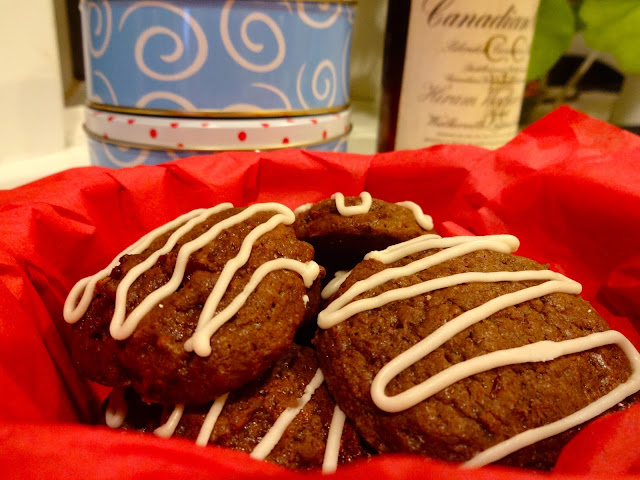"Hey, you can't come into this bar!" says the bouncer. "You're a mushroom!"
"Oh come on," replies the mushroom. "I'm a fun-gi!"
The defensive mushroom makes a fair point. Save the button and crimini, the more exotic mushroom varieties—petal-esque, gill-like, tentaclish— are often disregarded by the commonplace shopper, perceived as unapproachable lest a cloak of mystery and abstruseness.
"White button variety is the
biggest seller, because people are used to it," says third-generation
mushroom farmer Joseph Bulich. And the consequent fate of the chanterelle, oyster, hen of
the wood, and morel? Blame the shadowy dwellings, poisonous potential, or
obscure shapes of these sphinxlike spores—plus their elitist illusion—and most
home-cooks are content leaving their preparation to the professionals.
But, as the mushroom asserted himself, these little
woody-fragranced, meaty-fleshed guys are FUN! From the occasional cook to the professional
chef, the salubrious spores can be enjoyed by all. And while the season for
wild mushrooms technically ends in late autumn, New Yorkers are in luck—Bulich
Mushroom Farm organically cultivates mushrooms in temperature-controlled barns
year-round, waking up at 3:15am every Saturday morning (eek!) to deliver white
buttons, criminis, oysters, and shiitakes fresh to the Union Square Greenmarket
from their home in the Catskills. Vegivores and locavores alike, rejoice!
At Bulich Farms, mushrooms are picked the day before market,
yielding a crop with such expansive flavors, textures and culinary artifice
that their biggest commonality is probably freshness. Shiitakes are grown off
of oak logs to produce a woodsy, “chickeny” flavor, while the oyster mushroom
is more seafood nuanced, like a scallop. The baby portabellas, or crimini's,
shine in soups and omelets. The first two flourish in flavor post-cooking,
while the latter is delightful eaten raw too.
The varied chemical make-up of each mushroom kind makes
preparation important. With fat-soluble flavor compounds, the more delicate mushrooms
like chantarelles, oysters, and shiitakes are optimal for sautéing in butter,
oil, or cream. Their sponge-like affection also lends them well to cooking
alcohol such as wine or sherry. For a special treat, whole-roast your oysters:
Bulich Farm cultivates theirs in wholesome, beautiful bunches; this method preserves
their lovely natural shape.
Because your foraged specialties like chantarelle and oyster
can be a bit pricey—$29.99 for a pound of the golden (in color and price)
chantarelles, yikes! — I recommend mixing together a few types of mushrooms in
your dish, as to avoid breaking the bank and to expose the full spectrum of
flavors each has to offer. At the farmers market, Bulich Farm mushrooms range
from $5 to $12 a pound.
While the wild mushroom's complex, rich earthiness can be
beautifully showcased in many a dish, I invite you to share its palatable
flavors with others in this Wild
Mushroom Bruschetta holiday hors d'oeuvre. Piquant and savory in a sherry
reduction seasoned with fresh parsley and thyme, the bruschetta boasts the
heartiest of tastes, yielding quite the Epicurean experience—one, as seen by
this recipe, that is best received with a clean, milky chèvre, crunchy crostini, and glass of full-bodied wine.
Shall we raise that glass and make a toast to your mushroom?
Here’s to being a fun-gi.
When shopping for produce, look for mushrooms with firm, smooth and dry caps, and avoid damp, pitted or dried-out ones. If not using right away, store (unwashed) in the refrigerator in a paper bag. Rather than rinsing before eating, pat with a damp towel. For more helpful facts on fungiculture, visit the Epicurious Visual Guide to Mushrooms.
Wild Mushroom Bruschetta (derived from The Culinate Kitchen Collection)
Yield: about 1 1/2 cup bruschetta; enough to top 30 crostini
Ingredients:
1 Tbsp. butter,
divided
1 Tbsp. extra-virgin
olive oil
1 shallot, minced
2 cups wild
mushrooms, (such as chanterelle, oyster, porcini, and/or crimini)
1 garlic clove,
minced
¼ cup white wine or
sherry
2 Tbsp. fresh
parsley, finely chopped
2 Tsp. fresh thyme
Salt and pepper,
to taste
1 large French
baguette, cut diagonally into ½-inch slices and toasted
5 oz. goat cheese
Directions:
2. Spread the goat cheese over the toasted bread slices, and
then top with warm mushrooms. Serve immediately, and preferably with a glass of
wine.
Persson O. (1997). The Chanterelle Book. Berkeley, California: Ten Speed Press.
"Chantarelle and Oyster Mushroom Recipes." Martha Stewart. Martha Stewart Living Omnimedia, Inc., n.d. Web. 17 Dec. 2012.






















